Botox Vs Xeomin
As we age, we naturally develop fine lines and wrinkles on the face. These fine lines can develop in one of two ways: either due to volume loss in the face or sun damage, which are wrinkles known as “static wrinkles,” or as a result of repeated muscle contractions, known as “dynamic wrinkles.” Dynamic wrinkles occur around the eyes in the form of “crow’s feet,” which can develop after repeated scrunching of the eyes when we smile, around the mouth, known as “smile lines,” and in the glabellar area, known as frown lines that form creases on the forehead and between the eyes. All of these dynamic wrinkles are completely natural but can still betray signs of aging and many people find they wish to be rid of these dynamic fine lines. Luckily, there are non-invasive treatment options, such as botulinum toxin A injections, that do not involve a visit to the plastic surgeon. But many patients ask, which treatment option – Xeomin®, Dysport® or Botox® – is right for me?
When determining the difference between injection treatment options it can initially seem confusing – what is the difference between the injection treatments Xeomin and Botox? Is there one that works better than the other? Xeomin, Dysport, and Botox are all injectables that contain the active ingredient botulinum toxin A, a neurotoxin that works to treat muscle spasm-related medical conditions and cosmetically to eliminate fine lines and wrinkles in a fight against the natural aging process. These neurotoxins are extremely effective but have slightly different composition and can treat slightly different conditions. The best course of action when making a determination about the best treatment plan for you is to consult an expert, board-certified dermatologist, such as Dr. Michele Green in New York.
Located on the Upper East Side of New York City, Dr. Michele Green has been performing Botox, Dysport, and Xeomin for her satisfied patients since each treatment became FDA approved. Dr. Green’s “less is more” philosophy, when it comes to cosmetic injectables, delivering a natural looking cosmetic result. Dr. Green is considered one of the best Botox injectors in New York and is consistently voted as one of the best dermatologists in NY by Castle Connolly, New York Magazine, Super Doctors, and The New York Times. If you are considering Botox, Dysport, or Xeomin for the first time, Dr. Green is here to help.
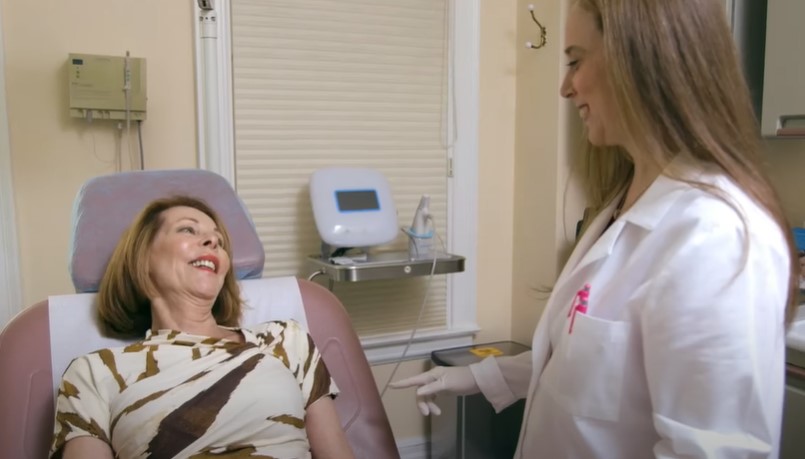
What is Botox?
Botox is one of the most popular non-invasive, injection treatments in the United States. It is well regarded for its use as a cosmetic treatment to erase the appearance of fine lines and wrinkles on the face and can also be uniquely used to treat certain conditions such as chronic migraines, excessive sweating in the underarm, and overactive bladder. Botox is the brand name for onabotulinumtoxinA, which is a form of the botulinum toxin type A, a neurotoxin created by a species of bacteria called Clostridium botulinum. Produced by the company Allergan, Botox was first approved by the FDA (US Food and Drug Administration) to treat certain medical conditions in 1985 and approved for cosmetic use in 2002.
Note: Dr. Green only performs Botox for cosmetic indications and does not treat migraines.
What is Xeomin?
Xeomin is an injectable treatment derived from another type of botulinum toxin type A called incobotulinumtoxinA. Produced by the company Merz Pharmaceuticals, Xeomin was first approved for cosmetic use in 2010. When used for cosmetic purposes, the neurotoxin is best used to treat forehead lines (called glabellar lines), frown lines, and crow’s feet. Xeomin has also received FDA approval to treat excessive drooling among other conditions, such as blepharospasm and cervical dystonia. Xeomin is unique from other forms of the botulinum toxin A as it does not contain preservative proteins. This means that it is a pure form of the neurotoxin, which will not cause the body to produce antibodies. As a result, the body does not grow resistant to the treatment over time.
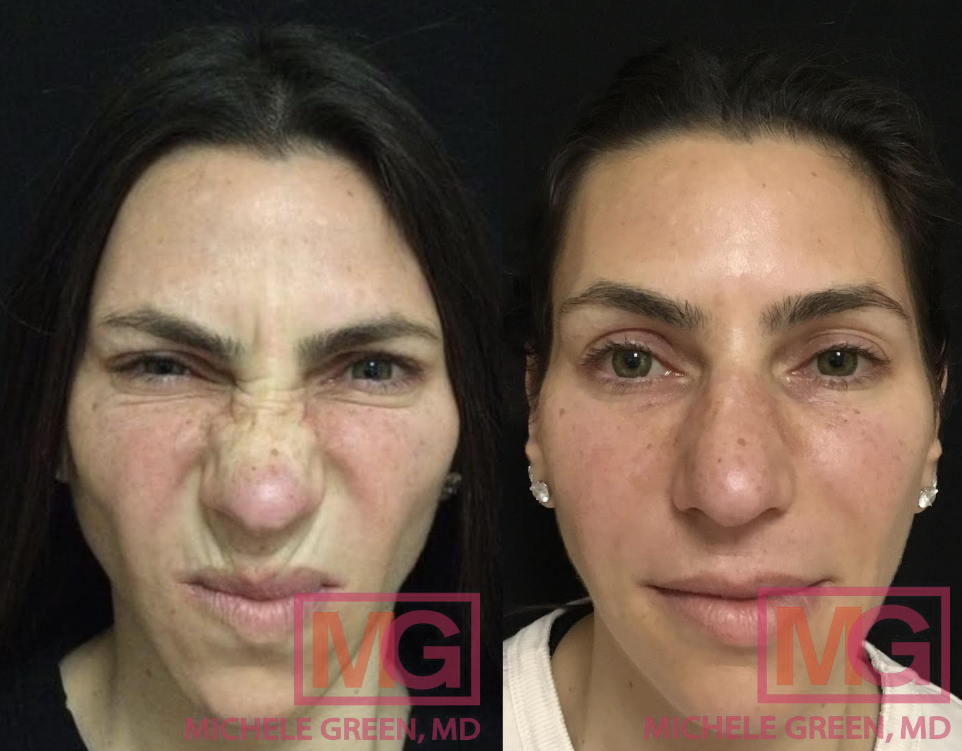
Botox in Glabella & Eye Area before and after
How do Botox and Xeomin work?
Botox and Xeomin both contain the active ingredient of botulinum toxin A, a neurotoxin derived from the bacterial species Clostridium botulinum and each treatment works to relax the muscles in similar ways. When injected into your muscle, neurotoxins such as the botulinum toxin A block the neurotransmitters at the injection site, which signals the muscle to contract. As a result, the muscle is “frozen,” meaning it relaxes and does not engage. Cosmetically, when the neuromodulator is injected, it reduces the appearance of wrinkles by smoothing out the surface of the skin. These anti-aging affects are characteristics of both Botox and Xeomin. Specifically, both are extremely adept at treating “dynamic wrinkles,” meaning wrinkles that are caused by muscle contractions such as frown lines, smile lines around the eyes (crow’s feet) and mouth, or glabellar lines. The muscle relaxing properties of the treatments are also important for treating medical conditions such as blepharospasm, which is when the eye twitches in an involuntary manner, and cervical dystonia, which occurs when the muscles in the neck engage irregularly. For both of these conditions, blocking the neurotransmitters and relaxing the muscle relieves the symptoms of the conditions.
How does Xeomin compare to Botox and Dysport?
While there are many similarities in how Xeomin, Botox, and Dysport work as muscle relaxers, there are several key differences that are important to note, that dictate which treatment is best to treat a variety of conditions. The first major difference between Xeomin and Botox is that Botox contains accessory proteins, which act as a preservative. Xeomin, on the other hand, does not contain this proteins and is a more concentrated or “pure” form of the neurotoxin. The additives in Botox cause the body to produce antibodies that resist the effects of the Botox treatment over time. Xeomin is pure 150kD of the neurotoxin and, thus, does not trigger the production of antibodies, meaning that the treatment can still be effective even if the body has built up a resistance to Botox. Dysport (abobotulinumtoxinA) is similar to Xeomin in that it provides temporary muscle paralysis in the area that is injected, and can also rarely cause resistance to injection.
Another related difference between Xeomin and Botox is that the results of Botox take a little longer to take effect than Xeomin. This is due to the fact that the body has to break down the accessory proteins before the neurotoxin can take effect. Botox, for that reason, can take approximately one to two weeks to take affect whereas it takes about five days before Xeomin treatment shows its full effects. Dysport seems to have an earlier onset than both Botox and Xeomin, with the effect being noticeable in two to three days. Additionally, Botox and Dysport have to be refrigerated whereas Xeomin does not. The ability to store Xeomin at room temperature gives Xeomin an increased leave of accessibility over Dysport and Botox.
While Botox and Xeomin do work similarly, Botox is approved to treat several more medical conditions than either Dysport or Xeomin. Where all of these neurotoxins can be used to provide anti-aging treatments for cosmetic use, Botox has been FDA approve to treat additional medical conditions such as chronic migraines, overactive bladder and hyperhidrosis. Hyperhidrosis is a condition characterized by excessive sweating, of the underarms, hands, and feet, and is an extremely popular indication for Botox in the office of Dr. Michele Green.
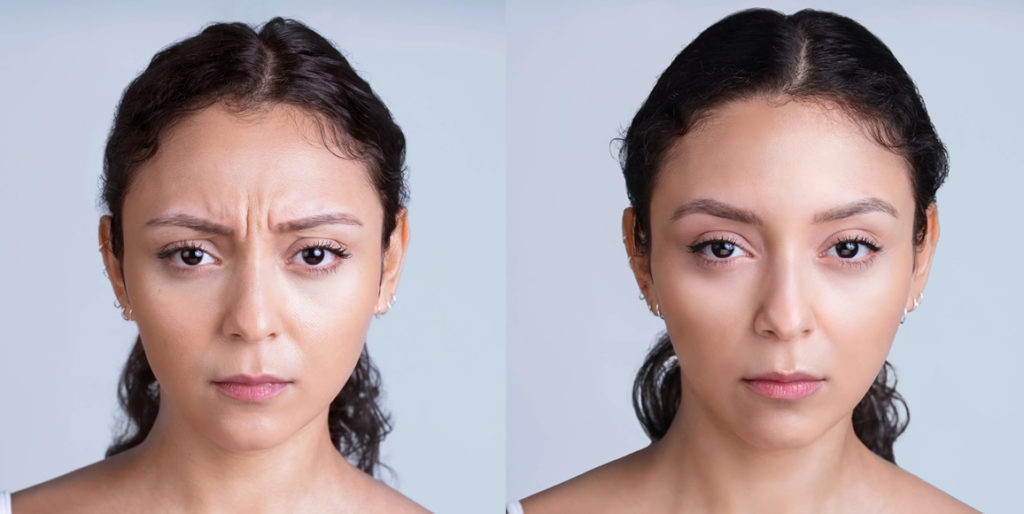
Xeomin for Frown Lines – 30 days before and after
What are Xeomin and Botox approved to treat?
Xeomin and Botox have both been FDA approved to treat a variety of cosmetic and medical conditions. There is some overlap in the uses for which they have been approved and some key differences. Cosmetically, both Botox and Xeomin have been FDA approved to treat frown lines that appear on the face. Botox has also been FDA approved to treat crow’s feet, which are fine lines that appear around the eyes, and forehead lines, which appear across the forehead and between the eyes. Medically, both are approved to treat conditions that result in muscle spasms, such as blepharospasm (which causes twitching in the eyelid) and upper lip spasticity. They are also both approved to treat cervical dystonia, which is an uncommon ailment that affects the muscle activity in the neck. Botox is uniquely approved to treat other medical conditions, such as chronic migraines, overactive bladder and acute excessive sweating. Xeomin, comparatively, is uniquely approved to treat chronic drooling for both children and adults.
What is the treatment procedure for botulinum toxin A injections?
Botulinum toxin A injectable treatments, including both Botox and Xeomin, are fast and simple processes best performed by a board-certified dermatologist, such as Dr. Michele Green. To start, you will have a consultation with Dr. Green where the two of you will discuss your treatment and aesthetic goals and she will recommend the treatment process that is best to suite your individual needs. Be sure to inform Dr. Green if you experience allergic reactions to botulinum toxin A injections, have a history of respiratory illness, are currently pregnant or breastfeeding, or if you are taking muscle relaxer medications.
Before you come in for the procedure, it is best to avoid taking anti-inflammatory medications (like Advil or aspirin) in order to decrease your risk of bruising following the procedure. Dr. Green recommends coming to your appointment with a clean face, free of make up. When you arrive for your appointment, your injector will administer the treatment, which does not take long – approximately ten minutes. Most patients experience little to no discomfort during the injections themselves. The units of Botox or Xeomin administered and number of injections depends on the treatment area and the condition being treated or aesthetic goals.
What is the aftercare for Botox vs Xeomin?
Botox and Xeomin are non-invasive procedures so there is no recovery time, or downtime, necessary. After the treatment, you can return to your regularly scheduled activities. Dr. Green recommends that you do not lay down on the treatment area and avoid massaging injection site following the treatment. This is to further minimize the risk of spreading the neurotoxin to other parts of your body. You can, however, wash your face and put on make up directly following the treatment if you so choose. With the outstanding results and no downtime, Botox or Xeomin are great options for patients who are less interested in invasive procedures like plastic surgery for anti-aging treatment.
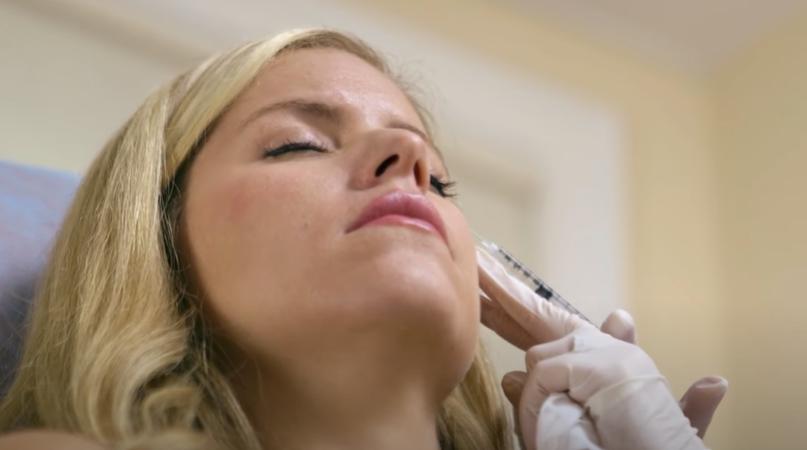
What are the side effects of Xeomin?
Xeomin is a simple and relatively painless procedure with no recovery time following the treatment. There are several possible side effects of Xeomin that patients may experience following treatment. Common side effects include pain, bruising, and swelling at the treatment site. Risk of developing these side effects can be reduced if you do not take anti-inflammatory medication before your appointment. Patients have reported dry eye, dry mouth, headaches, drooping eyelids, and diarrhea. Some patients have also experienced congestion and in more serious cases issues with vision, trouble breathing, respiratory infection, high blood pressure, and vomiting. The risk of developing serious side effects of Xeomin injections are greatly reduced if you receive treatment from an experienced, board-certified dermatologist, such as Dr. Michele Green. While the procedure itself is straight forward, expert precision is key to making sure that the botulinum toxin A does not spread to other parts of the body and cause more serious complications.
What are the side effects of Botox?
The common side effects of Botox are similar to those of Xeomin. Patients may experience redness, swelling, and bruising where the injections took place. These side effects should dissipate within several hours or days following the treatment. Some more severe side effects of Botox include sagging in the face and muscle weakness, headache, and flu-like symptoms. If the neurotoxin spreads to other parts of the body, the side effects can be more severe, including difficulty breathing. To reduce the risk of developing severe side effects, make an appointment with an expert dermatologist who specializes in injections, like Dr. Green.
Does Xeomin work faster than Botox?
Xeomin and Botox are both extremely effective treatments for a variety of medical conditions and for eliminating fine lines and wrinkles on the face. Research published by the Journal of Dermatology Surgery has shown that both treatments produce similar effectiveness four months following the injections. That said, Xeomin has been shown to produce results faster than Botox largely due to the formulation of each treatment. Botox contains accessory proteins as an inactive ingredient that acts as a preservative. As such, the body has to break down the protein before the effects of Botox are shown. Xeomin is a purer form of the neurotoxin, meaning the active ingredients can work immediately and the effects appear after only a couple of days (approximately five) as opposed to 7-14 days following treatment for Botox. So, while both Botox and Xeomin are extremely effective in anti-aging treatment, Xeomin does take effect faster than Botox.
Does Xeomin last as long as Botox?
Yes! In fact, Xeomin lasts as long as Botox. Botox treatment effects typically last for three to four months while Xeomin has been known to last a similar amount of time or a bit longer. Studies have shown that this can be particularly useful for women who would like to reverse the signs of aging by eliminating glabellar lines. Xeomin has been shown to show results in that treatment area for longer than Botox treatments.
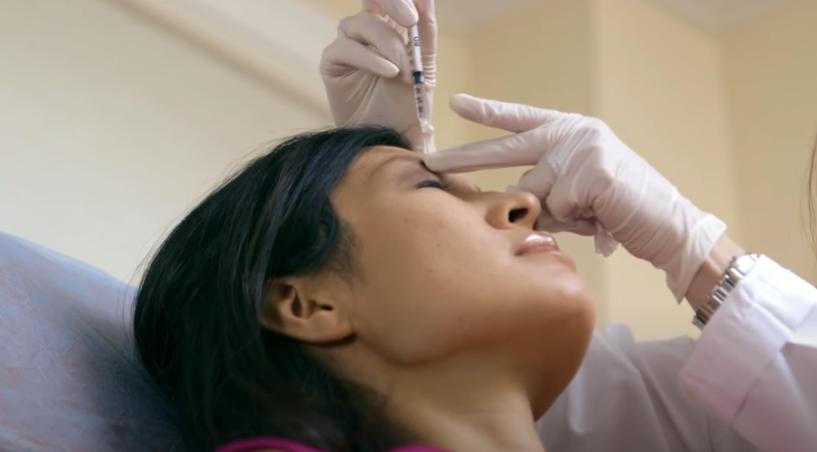
Can Xeomin and Botox injections be repeated?
Yes! Xeomin and Botox injections can both be repeated once the effects begin to wear off. For Botox, this is every 3-4 months and for Xeomin every 3-5 months. One of the advantages of Xeomin is that due to the fact that there are no added proteins acting as a preservative, the body does not build up antibodies against the treatment. Research has shown that some patients have built up a resistance to Botox. For those patients, treatment can be continued with Xeomin instead.
Can you mix Botox and Xeomin?
No. When you are receiving a botulinum toxin A treatment, different types of the neurotoxin, such as Botox, Xeomin or Dysport, should not be combined. There have been no studies combining these products during a single injection and should be avoided. If you would like to try either Botox, Dysport or Xeomin, you can start with one and try the other after a given period of time. Although they are all neurotoxins, they each have a slightly different chemical formulation.
While you should not combine Botox and Xeomin together, there are other skincare treatments that you can use in combination with these injections. Dermal fillers such as Juvederm®., Restylane®., and Sculptra®., can be paired with Botox or Xeomin treatment to further enhance your anti-aging treatment and provide lift and volume in another non-invasive way. When you have your initial consultation appointment with Dr. Green, the two of you will discuss your treatment needs and aesthetic goals. Together, you will determine the treatment plan that is right for you, which can include a variety of treatment options.
Which is better Botox or Xeomin?
Patients often ask the question: is Botox better than Xeomin or is Xeomin better than Botox and the answer is: it depends. Neither treatment is inherently “better” than the other – the treatment that is best for you is dependent on your cosmetic goals or the specific medical condition that you wish to eliminate. If you are looking to treat a condition such as chronic migraines, excessive sweating, or a lack of bladder control, Botox is FDA approved to treat those conditions. If you are looking to treat excessive drooling, Xeomin is FDA approved to treat that condition. For your cosmetic goals, Xeomin, Dysport, and Botox can treat fine lines and wrinkles on the forehead and around the eyes. When trying to determine which treatment is best for you, the best course of action would be to consult a board-certified, expert dermatologist, such as Dr. Michele Green. She can assess your treatment area and make a recommendation about the treatment plan that will work best to reach your aesthetic and physical goals and needs.
Does Xeomin work as well as Botox?
Yes! Both Xeomin and Botox are extremely effective treatments to reduce the appearance of fine lines and wrinkles on the face. If you are looking to treat a specific medical condition, there are some conditions, such as twitching of the eyelid and lower lip as well as cervical dystonia that both Botox and Xeomin are approved to treat. Both treatment produce lovely anti-aging results and can be repeated every couple of months for continued smoothness on your face. Some recent studies have actually shown that the effects of Xeomin show themselves faster and last longer than Botox injections. The results of Xeomin injections can appear in only five days and can last up to six months.
Is Xeomin the same as Botox?
Xeomin and Botox are both neurotoxins known as botulinum toxin A but are slightly different in composition. Xeomin is also known as incobotulinumtoxinA while Botox is also known as onabotulinumtoxinA. Both Xeomin and Botox work to block the neurotransmitters that signal the muscles to contract thereby “freezing” the muscle and causing it to relax. This eliminates dynamic wrinkles on the face and can help to improve certain medical conditions. Xeomin and Botox differ in that Botox contains proteins that act as a preservative while Xeomin does not. This affects how quickly the effects of the treatment show themselves following the injections. Both Xeomin and Botox can be used for similar purposes so it is best to consult with Dr. Green so she can help you to determine which treatment is best for you.
Is Xeomin cheaper than Botox?
The cost of Botox and of Xeomin depends on several factors, including geographic location, the size and scope of the treatment area, and the type of institution at which you are receiving your treatment. The cost is partially calculated based off of how many units of the injection you require for treatment or areas which need treatment. Furthermore, the cost of treatment can increase if you are receiving the treatment from a board-certified dermatologist as opposed to a MedSpa or nurse. However, the risk of developing more serious side effects is greatly reduced if you receive treatment from an expert dermatologist, such as Dr. Green.
Which is better: Botox, Dysport, or Xeomin?
Dysport is another botulinum toxin A treatment that works in much the same way as Botox and Xeomin by blocking the neurotransmitters at the injection site and relaxing the muscle to remove fine lines and wrinkles and treat certain conditions. Dysport, which is the trade name for the injectable created by the company Galderma, was specifically created to treat wrinkles in the forehead also known as glabellar wrinkles. Like Botox, Dysport contains preservative proteins but the molecules in the injectable are smaller than the ones in Botox and so the results of the Dysport treatment can be seen in 3 to 5 days following the injections. Like when you compare Botox to Xeomin, Dysport is not inherently better or worse than either treatment. Dr. Green can make a recommendation about which treatment option is best for you based on your unique goals.
How do I get started with Xeomin, Botox, or Dysport injections today?
If you are looking to eliminate or soften fine lines and wrinkles, neurotoxins such as Botox, Dysport, or Xeomin may be best for you. The first step would be scheduling a consultation with Dr. Michele Green. She will evaluate your facial anatomy and cosmetic goals to determine which neurotoxin or dermal filler would be best for you. Whether you are interested in having lip injections or frown lines treated, Dr. Green’s “less is more” philosophy will give you the best, naturally looking cosmetic results. Whether it be cosmetic injections, laser treatments, or chemical peels, Dr. Green will help rejuvenate and refresh your skin. To get started, please contact us online today or call 212-535-3088 to learn how expert New York City dermatologist Dr. Michele Green can help you reduce the visible signs of aging today.
 212-535-3088
212-535-3088